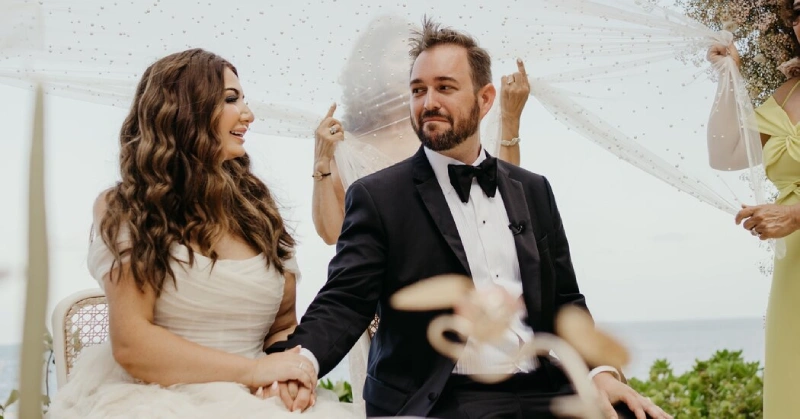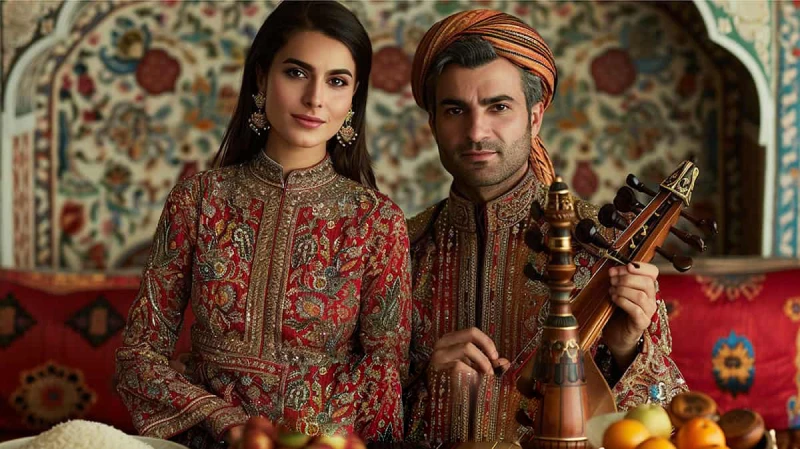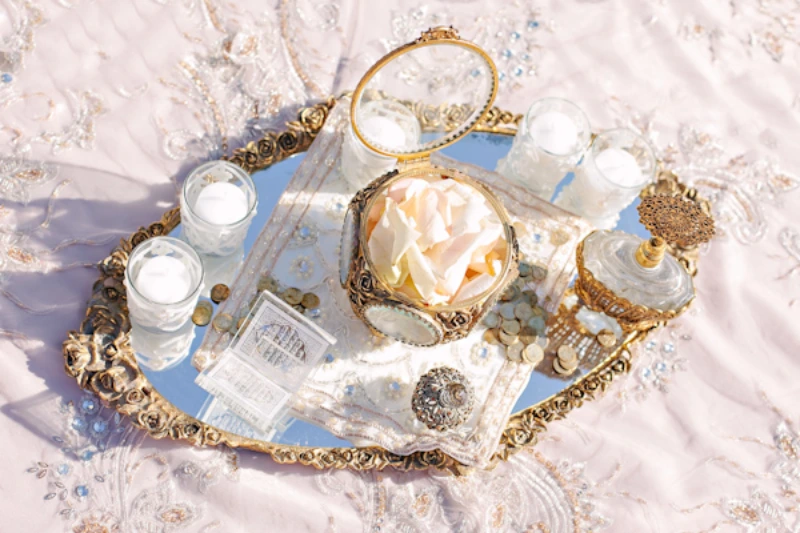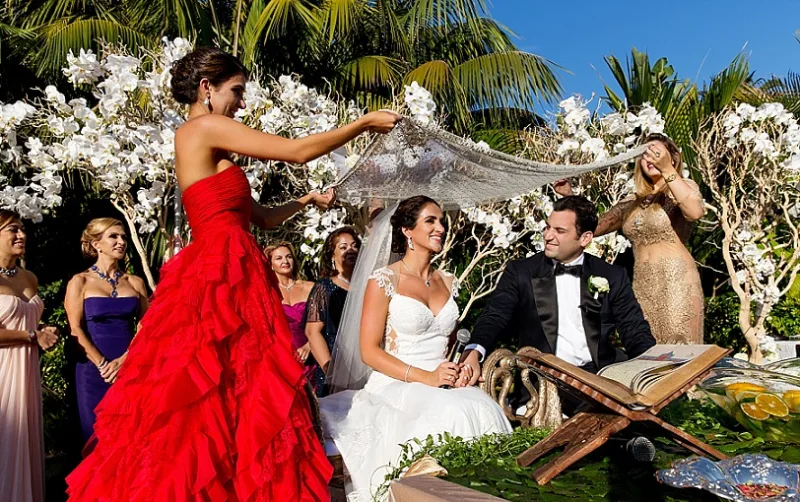The Persian wedding is a vibrant tableau of rich colors, intricate details, and deeply rooted customs, and at the heart of this celebration is the bride’s attire. Steeped in tradition yet evolving with contemporary flair, what a Persian bride wears tells a story that blends heritage with personal expression. From the opulent elegance of the traditional dress, adorned with exquisite embroidery and gemstones, to modern interpretations that embrace minimalist aesthetics, each choice reflects unique aspects of Persian culture. As brides navigate their options, they find themselves at a fascinating intersection of history and innovation, allowing them to honor their ancestry while making a statement on their special day. In this exploration, we delve into the captivating world of Persian bridal fashion, unveiling both timeless traditions and the latest trends that encapsulate the essence of a Persian bride’s journey down the aisle. Join us as we uncover what defines the enchanting attire of these brides, setting the stage for a celebration of love and legacy.
Historical Significance of Persian Wedding Dresses
The history of Persian wedding dresses is as rich and intricate as the culture from which they spring. Dating back thousands of years, these dresses have always been a focal point of Persian weddings, symbolizing not just the beauty of the bride, but also her family’s status, heritage, and the cultural significance of marriage. Persian wedding attire has evolved through various dynasties, each leaving a distinct imprint on the style and design of bridal wear.
During the Achaemenid Empire, which flourished from 550 to 330 BC, the garments worn by brides were influenced by the opulent and grandiose fashion of the court. Dresses were often made of luxurious fabrics such as silk and adorned with intricate gold embroidery and precious gemstones. This tradition of using high-quality materials and elaborate designs has persisted through the centuries, becoming a hallmark of Persian bridal fashion.
As the centuries passed, Persian bridal attire continued to evolve, incorporating elements from neighboring cultures and adapting to the changing social and political landscapes. The Safavid and Qajar dynasties, for example, introduced more elaborate and colorful designs, reflecting the opulence and artistic sensibilities of their times. Today, the historical significance of these dresses is not lost on modern brides, who often seek to incorporate traditional elements into their wedding attire as a way of honoring their heritage and connecting with their cultural roots.
Traditional Persian Bridal Wear
Traditional Persian bridal wear is characterized by its opulence, intricate details, and the use of luxurious fabrics and embellishments. One of the most iconic pieces of traditional Persian bridal attire is the “Jameh,” a long, flowing gown made from sumptuous materials such as silk, satin, or velvet. The Jameh is often adorned with elaborate embroidery, beadwork, and sequins, reflecting the bride’s family’s wealth and status.
Another key component of traditional Persian bridal wear is the “Shawl” or “Chador.” This long, rectangular piece of fabric is draped over the bride’s head and shoulders, adding an element of modesty and elegance to her ensemble. The Shawl is often made from delicate fabrics such as lace or chiffon and may be embellished with intricate embroidery or beading. In some regions, brides also wear a “Roba,” a long, open-front coat that is worn over the Jameh. The Roba is typically made from luxurious fabrics and features elaborate designs, adding an extra layer of sophistication to the bride’s outfit.
Completing the traditional Persian bridal look are the accessories, which often include elaborate jewelry, a beautifully embroidered veil, and ornate headpieces. These accessories not only enhance the bride’s appearance but also carry symbolic meanings. For example, the veil represents purity and modesty, while the jewelry signifies wealth and prosperity. Together, these elements create a stunning and meaningful ensemble that reflects the bride’s cultural heritage and the significance of her wedding day.
Modern Interpretations of Persian Bridal Fashion
In recent years, Persian bridal fashion has seen a surge of modern interpretations that blend traditional elements with contemporary styles. Modern Persian brides often seek to create a look that is both timeless and trendy, incorporating elements of their cultural heritage while also embracing current fashion trends. This fusion of old and new has given rise to a diverse array of bridal wear options, ranging from minimalist designs to more elaborate and avant-garde creations.
One trend that has gained popularity among modern Persian brides is the minimalist approach to bridal wear. This style emphasizes clean lines, simple silhouettes, and understated elegance, often featuring sleek fabrics such as silk or satin, with minimal embellishments. While this minimalist approach may seem a departure from the opulent and ornate traditional dresses, it allows brides to make a sophisticated and contemporary statement on their wedding day.
Another trend that has emerged in modern Persian bridal fashion is the incorporation of Western elements into traditional attire. For example, some brides choose to wear a classic white wedding gown, while still incorporating traditional Persian accessories such as an embroidered veil or ornate jewelry. This blending of Western and Persian styles allows brides to create a unique and personalized look that reflects their individual tastes and cultural backgrounds.
Additionally, many modern Persian brides are opting for custom-made dresses that are tailored to their specific preferences and body shapes. This trend allows brides to work closely with designers to create a one-of-a-kind gown that perfectly captures their vision for their wedding day. Whether they choose a traditional or modern design, custom-made dresses offer brides the opportunity to express their personal style and ensure that their wedding attire is truly unique.
Key Elements of a Persian Wedding Dress
A Persian wedding dress is a masterpiece of design and craftsmanship, featuring several key elements that make it truly special. One of the most distinctive features of a Persian wedding dress is the use of luxurious fabrics. Silk, satin, velvet, and chiffon are commonly used to create the flowing, elegant silhouettes that characterize these dresses. These fabrics not only add a touch of luxury to the dress but also allow for intricate embroidery and embellishments, which are hallmarks of Persian bridal fashion.
Embroidery is another key element of a Persian wedding dress. Traditional Persian embroidery is known for its intricate patterns and exquisite craftsmanship, often featuring floral motifs, geometric designs, and symbolic elements. Gold and silver thread are commonly used in embroidery, adding a touch of opulence and sophistication to the dress. In addition to embroidery, Persian wedding dresses are often adorned with beadwork, sequins, and gemstones, creating a dazzling and eye-catching effect.
The silhouette of a Persian wedding dress is also an important element to consider. Traditional Persian bridal gowns often feature long, flowing skirts and fitted bodices, creating a graceful and elegant look. Some dresses may also include layers of fabric or a train, adding to the overall sense of grandeur and majesty. Modern interpretations of Persian wedding dresses may incorporate different silhouettes, such as A-line, mermaid, or ball gown styles, allowing brides to choose a look that best suits their personal preferences and body shape.
In addition to the dress itself, accessories play a crucial role in completing the Persian bridal look. A beautifully embroidered veil, ornate headpieces, and elaborate jewelry are all essential components of a Persian bride’s ensemble. These accessories not only enhance the bride’s appearance but also carry cultural and symbolic meanings, adding depth and significance to her wedding attire.
Accessories for the Persian Bride
Accessories are an integral part of a Persian bride’s ensemble, adding the finishing touches that complete her look and enhance her overall appearance. One of the most important accessories for a Persian bride is the veil, which is often made from delicate fabrics such as lace or chiffon and adorned with intricate embroidery or beadwork. The veil not only adds an element of elegance and sophistication to the bride’s outfit but also carries symbolic meanings, representing purity and modesty.
Jewelry is another essential accessory for a Persian bride. Traditional Persian bridal jewelry is known for its opulence and intricacy, often featuring elaborate designs and precious gemstones. Necklaces, earrings, bracelets, and rings are all commonly worn by Persian brides, adding a touch of glamour and luxury to their ensemble. In some regions, brides may also wear a “Taj,” or crown, which is often made from gold or silver and adorned with gemstones. This ornate headpiece adds a regal and majestic touch to the bride’s appearance, making her feel like a queen on her special day.
In addition to the veil and jewelry, other accessories such as shoes, handbags, and shawls are also important components of a Persian bride’s outfit. Shoes are typically chosen to complement the dress, often featuring intricate embroidery or embellishments. Handbags, while not always a necessity, can add a stylish and functional element to the bride’s ensemble. Shawls or wraps are also commonly worn, providing an extra layer of elegance and sophistication.
Together, these accessories create a cohesive and stunning look that enhances the overall beauty of the Persian bride. Each accessory is carefully chosen to complement the dress and reflect the bride’s personal style, while also honoring the cultural and symbolic significance of traditional Persian bridal wear.
The Role of Color in Persian Bridal Attire
Color plays a significant role in Persian bridal attire, with each hue carrying its own cultural and symbolic meanings. Traditionally, red has been a popular color choice for Persian wedding dresses, symbolizing love, passion, and prosperity. Red is often associated with joy and celebration, making it a fitting choice for a bride’s special day. In addition to red, other vibrant colors such as gold, green, and blue are also commonly used in traditional Persian bridal wear, each representing different aspects of life and culture.
Gold, for example, is often used in Persian bridal attire to symbolize wealth, prosperity, and success. Gold embroidery and embellishments add a touch of opulence and grandeur to the bride’s dress, reflecting the importance of the wedding celebration. Green, on the other hand, is associated with growth, fertility, and renewal, making it a meaningful color choice for a bride as she embarks on a new chapter in her life. Blue is often seen as a symbol of tranquility, wisdom, and protection, adding a sense of calm and serenity to the bride’s ensemble.
In modern Persian bridal fashion, white has become an increasingly popular color choice, influenced by Western wedding traditions. White symbolizes purity, innocence, and new beginnings, making it a fitting choice for a bride. However, many modern Persian brides still choose to incorporate traditional colors into their wedding attire, either through the use of colored accessories or by choosing a dress that features a combination of white and other vibrant hues.
Ultimately, the choice of color in Persian bridal attire is a deeply personal decision, reflecting the bride’s individual tastes, cultural heritage, and the symbolic meanings she wishes to convey. Whether she chooses a traditional red gown, a modern white dress, or a combination of colors, the use of color adds depth and significance to her wedding attire, making her feel truly special on her big day.
Regional Variations in Persian Wedding Dresses
Persian wedding dresses exhibit a fascinating array of regional variations, each reflecting the unique cultural and historical influences of different areas within Iran. These regional differences can be seen in the choice of fabrics, colors, embroidery patterns, and overall styles of the dresses, offering a rich tapestry of bridal fashion that celebrates the diversity of Persian culture.
In the northern regions of Iran, for example, wedding dresses often feature vibrant colors and intricate embroidery, inspired by the lush landscapes and rich cultural heritage of the area. The use of bright hues such as red, green, and blue is common, along with detailed floral and geometric patterns. Brides in these regions may also wear traditional headpieces and accessories that are unique to their local customs, adding an extra layer of cultural significance to their attire.
In contrast, wedding dresses from the southern regions of Iran, particularly in areas such as Bandar Abbas and Hormozgan, often feature lighter fabrics and more minimalist designs, reflecting the warmer climate and coastal influences. These dresses may incorporate softer colors such as pastels and whites, with subtle embroidery and embellishments. Brides in these regions may also wear traditional jewelry and accessories that are specific to their local traditions, creating a distinctive and elegant look.
In the western regions of Iran, particularly in Kurdish areas, wedding dresses often feature bold colors and elaborate embroidery, reflecting the vibrant and festive nature of Kurdish culture. These dresses may include multiple layers of fabric and intricate beadwork, creating a dramatic and eye-catching effect. Brides in these regions may also wear traditional Kurdish jewelry and headpieces, adding a touch of cultural heritage to their ensemble.
These regional variations in Persian wedding dresses highlight the rich diversity of Iranian culture and the unique influences that have shaped bridal fashion in different parts of the country. By incorporating elements from their specific regions, Persian brides can create a wedding look that is both deeply personal and culturally significant.
Tips for Choosing the Perfect Persian Bridal Look
Choosing the perfect Persian bridal look can be a daunting task, given the wide array of options available and the cultural significance of the attire. However, with careful consideration and thoughtful planning, brides can create a stunning and meaningful ensemble that reflects their personal style and heritage. Here are some tips to help brides navigate the process of choosing their Persian bridal look.
First and foremost, it’s important to start with a clear vision of the overall look you want to achieve. Consider the cultural and symbolic elements that are important to you, as well as your personal preferences in terms of style, color, and design. Whether you prefer a traditional, opulent gown or a more modern, minimalist dress, having a clear vision will help guide your choices and ensure that your wedding attire aligns with your overall aesthetic.
Next, consider working with a designer or tailor who specializes in Persian bridal fashion. A skilled designer can help bring your vision to life, creating a custom-made dress that perfectly fits your body shape and captures the essence of your desired look. They can also provide valuable insights and recommendations based on their expertise, ensuring that your dress incorporates the appropriate cultural and symbolic elements.
When choosing your accessories, take the time to select pieces that complement your dress and enhance your overall look. Consider the significance of each accessory, such as the veil, jewelry, and headpieces, and choose items that reflect your cultural heritage and personal style. Don’t be afraid to mix traditional and modern elements, creating a unique and personalized ensemble that is truly your own.
Finally, allow yourself plenty of time to plan and prepare for your wedding day. Start the process of choosing your dress and accessories well in advance, giving yourself enough time for fittings, alterations, and any necessary adjustments. By planning ahead and being thoughtful in your choices, you can create a Persian bridal look that is both beautiful and meaningful, making your wedding day truly unforgettable.
Conclusion: Celebrating Tradition and Modernity in Persian Weddings
In conclusion, the attire of a Persian bride is a mesmerizing blend of tradition and modernity, reflecting both the rich cultural heritage of Iran and the contemporary influences that shape today’s bridal fashion. From the opulent elegance of traditional gowns adorned with intricate embroidery and gemstones to the sleek and sophisticated designs of modern dresses, Persian bridal fashion offers a diverse array of options for brides to choose from.
The historical significance of Persian wedding dresses, coupled with the evolving trends and regional variations, creates a fascinating tapestry of bridal fashion that celebrates the diversity and beauty of Persian culture. By incorporating traditional elements and symbolic meanings into their attire, brides can honor their heritage and create a meaningful connection to their cultural roots.
At the same time, the modern interpretations of Persian bridal fashion allow brides to express their personal style and individuality, creating a unique and personalized look for their special day. Whether they choose a traditional gown, a modern dress, or a combination of both, Persian brides have the opportunity to navigate the intersection of history and innovation, creating a wedding ensemble that is truly their own.
As brides embark on their journey down the aisle, they are not only celebrating their love and commitment but also paying homage to the rich traditions and cultural heritage that have shaped Persian bridal fashion for centuries. By embracing both tradition and modernity, Persian brides can create a wedding look that is both timeless and contemporary, making their special day a true celebration of love and legacy.





